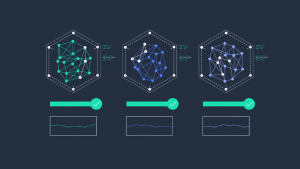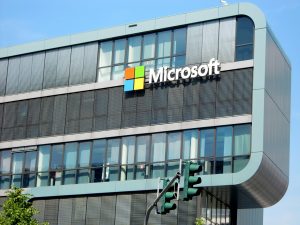Scott Lowe Explains Basics of SDN for CIOs on Wikibon
![]() Software defined networks, (SDN) also known as network virtualization, is a bleeding edge technology that jumped into prominence in the industry with VMware’s purchase of SDN pioneer Nicira just before VMworld 2012 in September. And while the technology may not be quite ready for real time yet, CIOs are going to be hearing more about SDN, and they want to be ready for that call from the CEO who has just read about the promise of SDN in an airline magazine. Most of the coverage of SDN, however, has been fairly high level and not really what CIOs need.
Software defined networks, (SDN) also known as network virtualization, is a bleeding edge technology that jumped into prominence in the industry with VMware’s purchase of SDN pioneer Nicira just before VMworld 2012 in September. And while the technology may not be quite ready for real time yet, CIOs are going to be hearing more about SDN, and they want to be ready for that call from the CEO who has just read about the promise of SDN in an airline magazine. Most of the coverage of SDN, however, has been fairly high level and not really what CIOs need.
Wikibon analyst, consultant, and former CIO Scott Lowe has stepped into that gap with a Professional Alert titled “SDN for the CIO: Introduction to Software Defined Networking” designed to bring the discussion down to a more concrete level.
SDN, he writes, “brings a new level of abstraction to the physical network” and “sounds strangely like service virtualization, which is also an abstraction technology.” And the two work well together – SDN is in part a response to the huge increase in network demand caused by server virtualization. However, he says, SDN is more than the network version of VMs.
A major part of the value of SDN is in its potential to streamline the process of reconfiguring a network to handle new demand. It does this by abstracting the network plane, which in today’s networks resides in the individual switches, to a higher layer, leaving just the data plane in the switch. That allows network administrators to configure large portions or whole networks at once rather than having to touch each switch to make the changes.
This is important, Scott says, because “data centers have undergone a sea change with regard to how network traffic flows…primarily as the result of virtualization.” Because virtualized workloads constantly shift across the network between servers and even data centers, “instead of traffic just going in-and-out, it’s going side-to-side, too.”
This forces more frequent reconfiguration of portions of the data network to handle changes in demand. SDN eliminates much of the time and effort involved, allowing network managers to respond faster and more accurately to these changes. More important, it allows network managers to refocus on the needs of each application, essentially creating a separate logical network for each application on top of the unified physical network layer.
SDN is still very much a bleeding edge technology, and while it is capturing increasing amounts of mindshare inside IT, it is not yet ready for prime time and still could fade away. And if it does become the Next Big Thing in the data center, that eventual mature product may or may not be based on OpenFlow, which today, Scott says, is “the S in SDN.”
Overall Scott writes he would not adopt SDN until the standards have been further refined and the network vendors are fully committed not just to the concept but to a specific standard set. However, CIOs should monitor SDN develop and in particular what their network vendors are doing.
As with all Wikibon research, Scott’s full Alert is available without charge on Wikibon.org. IT professionals are invited to register for free membership in the Wikibon community. This allows them to correct errors in Wikibon published material, leave comments and questions, and contribute their own Alerts, tips, and white papers. It also gets them invitations to Wikibon’s periodic Peer Incite meetings, at which their peers discuss their experience with leading edge technologies they find valuable. It also gives them free subscription to the Peer Incite Newsletter, in which Wikibon’s analysts examine the implications of the technologies, issues, and trends discussed at the meetings.
A message from John Furrier, co-founder of SiliconANGLE:
Your vote of support is important to us and it helps us keep the content FREE.
One click below supports our mission to provide free, deep, and relevant content.
Join our community on YouTube
Join the community that includes more than 15,000 #CubeAlumni experts, including Amazon.com CEO Andy Jassy, Dell Technologies founder and CEO Michael Dell, Intel CEO Pat Gelsinger, and many more luminaries and experts.
THANK YOU













